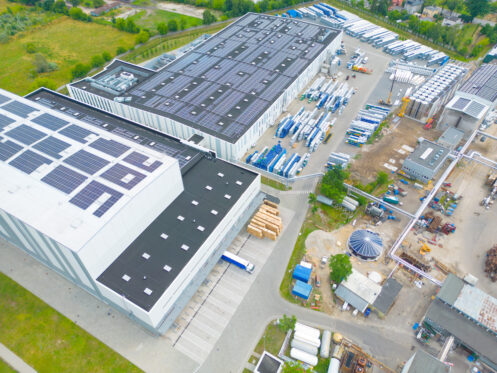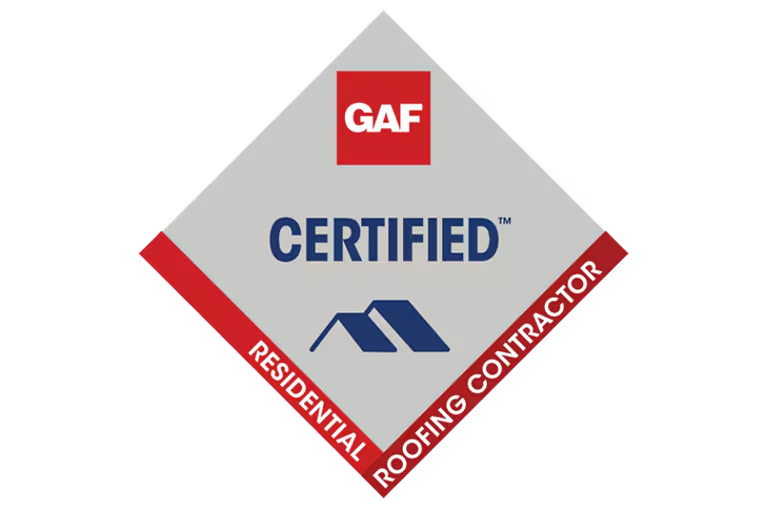Flat roofs can be more cost-effective, but may be more prone to water drainage issues when compared to sloped roofs. Although a flat roof can be a good option for many owners, it can require more maintenance to keep it in top shape.The Roof Detective in Columbus, OH, works with commercial property owners who want more reliability and fewer surprises from their roofing systems.
Why Different Roof Types Demand Different Strategies
Not every commercial roof works the same way, and not every roof should be maintained with the same checklist. A pitched roof, with its obvious slope, sheds water quickly and rarely deals with pooling. Water moves fast due to its slope, and the material only holds moisture for a short stretch. A flat roof works under different pressure. Rain spreads out across the surface, lingering longer and drying more slowly.
Roofs can be constructed with different materials. EPDM, TPO, PVC, and modified bitumen all have unique behaviors under stress. EPDM, a synthetic rubber membrane, handles UV exposure well and stretches with heat. But it’s also more prone to punctures if not protected. TPO and PVC offer stronger seams and reflect more sunlight, but can become brittle with age. Sloped roofs may use asphalt shingles or metal, both of which shed water more efficiently, but require specific types of upkeep.
To maintain optimal performance, your approach must match the type of roof you have. That means understanding not just the slope but also the surface and how it responds to wear, temperature, and time.
Flat Roof Drainage Always Requires Care
With a pitched roof, water is shed quickly. However, with flat systems, drainage must be carefully designed, installed, and maintained; otherwise, water will pool. When water sits near HVAC curbs or backs up near clogged scuppers, the risk to your roofing membrane increases with every storm.
Standing water accelerates decay in seams and tests the weakest points in the flashings. Pitched roofs rarely hold water long enough to see the same damage. With flat surfaces, drainage is the frontline of defense. If the pitch is off or a drain gets clogged, water has nowhere to go but into the roof itself.
EPDM roofs are particularly vulnerable to poor drainage because even a small puddle can find its way under seams. TPO and PVC materials often hold up better under shallow standing water, but still degrade faster when ponding becomes regular. To keep your roof in optimal shape, regular inspections must be performed.
Pitched Roof for Commercial Properties
While flat roofs get most of the attention in commercial building conversations, pitched roofs still play a major role in smaller facilities and retail locations. These roofs don’t struggle with drainage, but they come with other concerns. Flashing and shingle lift due to wind, uneven wear on sunny versus shaded sides, and granule loss are all part of the aging process on pitched surfaces.
Where flat roofs deal with pooling, pitched ones often face issues with fast runoff. Water flow can wear down gutters, overflow drains, and expose edge flashings. Roof valleys and dormers become weak points. While the roof dries faster, it also channels more force into a few specific spots.
Metal pitched roofs handle water well but suffer from expansion noise and sealant breakdown at the fasteners. Asphalt shingles can crack or cup with temperature swings. Understanding the material you’re working with helps define the right maintenance rhythm and identifies the vulnerabilities to look for after storms or during seasonal shifts.
Flashing, Penetrations, and What They Mean for Every Roof Type
Penetrations, such as vent pipes or HVAC curbs, create vulnerability regardless of the roof style. On flat roofs, flashing sits flat around these openings, sealed with adhesives and mechanical fasteners. On pitched roofs, flashing is shaped and layered with roofing materials to guide water downward.
In both cases, age and movement wear out those seals. Expansion pulls flashings loose, vibrations from equipment shake them out of place, and UV exposure dries out the materials. With EPDM or modified bitumen, even small gaps can let water travel horizontally beneath the surface. On shingled pitched roofs, improperly installed flashing can cause leaks behind siding or under roof valleys.
Routine inspections should specifically target these points. Flashing problems rarely show up as dramatic failures at first. They start as subtle separations or lifted corners that only reveal themselves when traced carefully. No matter the roof type, fixing flashing early prevents the kind of leak that spreads across multiple layers.
Surface Wear Looks Different on Different Materials
If you have a flat EPDM roof, bubbles or blisters usually mark trapped moisture. These flaws stretch the material and gradually weaken it, particularly in areas with high sunlight. With a built-up roof or modified bitumen, surface damage may show as cracking near the edges. That damage indicates aged material that no longer flexes with temperature changes.
On pitched asphalt shingle roofs, look for granule loss, curling, or color shifts. These show up unevenly, with the south- or west-facing side usually wearing out faster. Metal surfaces can dent from debris or hail, and exposed fasteners can rust or loosen over time.
In each case, surface damage reflects a bigger pattern. You may not notice it until water breaks through, but the roof always gives warning if you know what to look for. For flat systems, check footpaths and around rooftop units. For pitched roofs, look at edges, valleys, and areas where water changes direction.
Equipment and Foot Traffic Can Strain Any Roof
Flat roofs carry more mechanical load by design. HVAC units, vents, and even satellite gear are often installed on top of the structure. That means foot traffic becomes a factor every time maintenance or upgrades happen. EPDM and TPO systems suffer when heavy tools or ladders aren’t used carefully. Each step can compress insulation or leave marks in the membrane if walk pads aren’t installed.
Pitched roofs, while less traveled, still face stress when someone climbs up for repairs or inspections. Shingles can crack or dislodge underfoot. Metal panels may dent, creating pockets where water sits longer than it should.
Seasonal Shifts Push Every Material in New Ways
Flat and pitched roofs both face seasonal stress, but how they show damage can vary. Flat roofs expand and contract across a large area, testing seams and joints at every corner. Pitched roofs channel that same energy along ridges and valleys. With asphalt shingles, cold weather can cause brittle cracks. With EPDM, heat can lead to shrinkage that pulls away from edges and walls.
Each material reacts differently, so your timing for inspections should reflect those behaviors. Just before winter, flat roofs should get a full drain check, sealant review, and a close look at penetrations. For pitched roofs, clean out the gutters and look for missing shingles or loose fasteners after heavy winds.
Spring cleanups offer the best chance to catch freeze-thaw damage. Look for lifted seams, torn flashing, or stress splits that happened while the building expanded and contracted during colder months.
Long-Term Success Comes From Roof-Specific Plans
Every commercial roof deserves a maintenance strategy that matches its design. What works for a sloped shingle system won’t cover what an EPDM membrane needs. The material, shape, exposure, and usage patterns all influence how and when damage shows up.
Take Care of Your Flat Roof Now
With the right maintenance steps, you can keep your building protected. If your flat roof needs attention, schedule a service visit with The Roof Detective. We also offer commercial roof inspections, leak detection services, and preventative maintenance programs to help extend the life of your flat roofing system.





